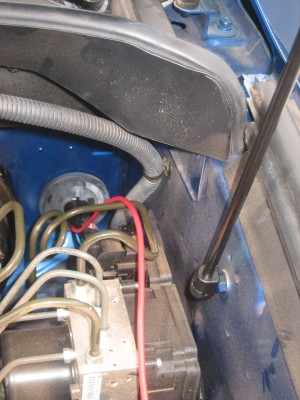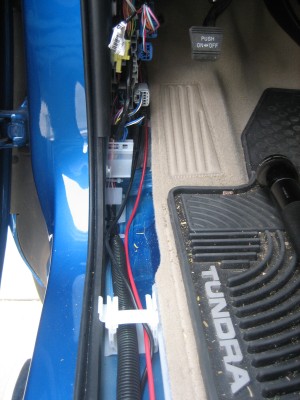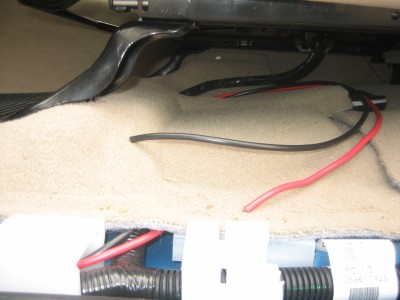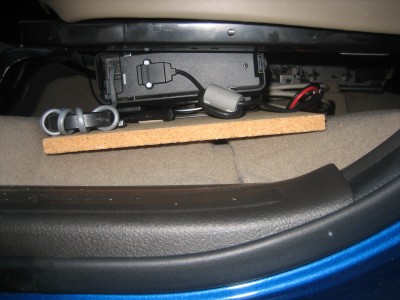Scott Townley
Gilbert, AZ
The FT-100 radio body fits under the driver's seat in the Tundra pretty well. The radio is mounted to a 1/2" piece of particle board, using the MMB-62 mobile mounting bracket. There's another "jackboard" or breakout bracket behind the radio, that combines the mic, speaker, and paddle ports onto a single DB-9 computer cable (see the Operating Position for further info).
Note the liberal use of ferrite material on cables. With remote-head installations (not just the FT-100), the microphone cable and the remote interconnection cable tend to be fairly long and are very susceptible to radiated RF interference. A decent piece of ferrite at both ends will usually fix any problems.
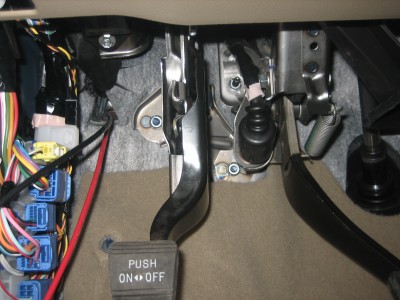
The power run for the radio came directly from the battery, located on the driver's side of the engine compartment. Both (+) and (-) wires are fused with 20A ATO (automotive blade-type) fuses. The Tundra has a conveniently-located firewall grommet nearly straight back from the battery. It's quite thick–it takes a sharp tool and some perserverence to get through the rubber. Naturally, don't knick the existing wiring!
This is the view from the cab, directly opposite the firewall grommet above. Note that the plastic kickplate to the left has been removed (this only required loosening one screw–none of those "dammits" or one-way push-on connectors).
The sill cover is easily removed (just snaps off with gentle upwards pressure at the ends) and the wires run under the cover. When completed, there will be no visible wire runs.
Eventually there is a tunnel underneath the carpet where another cable bundle is routed to beneath the driver's seat. The DC run turns there and just follows that bundle to the radio in its position shown in the first picture. Not too tough to push the wires through.

